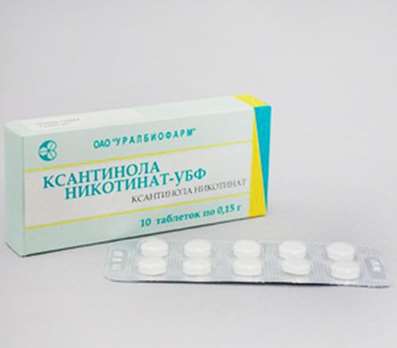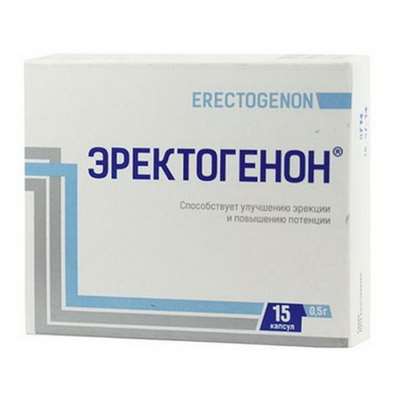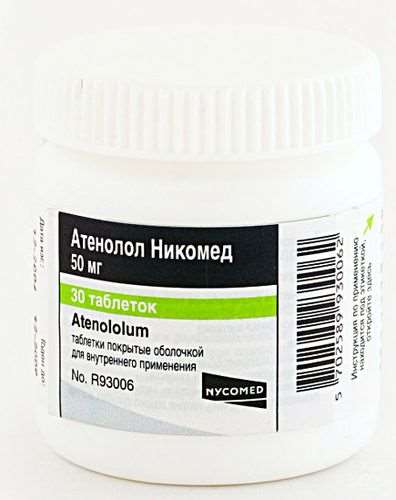Instruction for use: Salicylamide (Salicylamidum)
I want this, give me price
Pharmacological groups
NSAIDs - Salicylic acid derivatives
Nosological classification (ICD-10)
G43.9 Migraine, unspecified
Migraine, Acute migraine attack
I09.0 Rheumatic myocarditis
J06 Acute upper respiratory infections of multiple and unspecified
Frequent colds viral diseases, Infections of the upper respiratory tract, Acute respiratory disease influenza character, for colds Pain, Acute colds,Cold, respiratory infection,Seasonal colds, Pain in infectious and inflammatory diseases of the upper respiratory tract, Bacterial infections of the upper respiratory tract, Bacterial respiratory infections, Viral disease of the respiratory tract, Viral respiratory tract infections, Inflammatory disease of the upper respiratory tract, Inflammation of the upper respiratory tract disease, Inflammation of the upper respiratory tract illness with difficult sputum, Inflammatory airway disease, Secondary infections with colds, Shortness of sputum in acute and chronic respiratory diseases, Upper respiratory tract infection, Infections of the upper respiratory tract, Respiratory Tract Infections, Infections of the respiratory tract and lungs, Infectious-inflammatory diseases of the upper respiratory tract, Infectious-inflammatory diseases of the upper respiratory tract and ENT-organs, Infectious-inflammatory diseases of the upper respiratory tract in children and adults, Infectious-inflammatory diseases of the upper respiratory tract, Infectious inflammation of the airways,respiratory infection, Qatar upper respiratory tract, Catarrh of the upper respiratory tract, Catarrhal disease of the upper respiratory tract, Catarrhal symptoms of the upper respiratory tract, Coughing with a cold, SARS, ARI, ARI with rhinitis phenomena, Acute respiratory infection, Acute infectious and inflammatory disease of the upper respiratory tract, Acute respiratory disease, Sore throat or nose, Respiratory viral infections, Respiratory diseases, Respiratory infections, Recurrent respiratory infections, Secondary infection with influenza, cold in the chest, Feverish condition with flu usitis, acute sinusitis, genyantritis, purulent sinusitis
J11 Influenza, virus not identified
Flu, Influenza in the early stages of the disease, Flu in children, cold in the chest, Begins flu-like condition, Acute disease parainfluenza, parainfluenza, parainfluenza state, influenza epidemics, The pains of the flu, Influenza
K08.8.0 * Painful toothache
Dentinal pain, Dentinal pains, Pain pulpitis, Anesthesia in dentistry, Pain syndromes in dental practice, Pain after removal of tartar, Pain when extracting a tooth, Toothache, Pain after dental interventions
M00.9 Piogenic arthritis, unspecified (infectious)
Infection of the joints, Septic arthritis
M06.9 Other specified rheumatoid arthritis
Rheumatoid arthritis,Pain syndrome in rheumatic diseases, Pain in rheumatoid arthritis, Inflammation in rheumatoid arthritis, Degenerative forms of rheumatoid arthritis, Children's rheumatoid arthritis, Exacerbation of rheumatoid arthritis, Acute articular rheumatism, Rheumatic arthritis, Rheumatic polyarthritis, Rheumatoid arthritis, Rheumatic polyarthritis, Rheumatoid arthritis, Rheumatoid arthritis of active course, Rheumatoid arthritis, Rheumatoid polyarthritis, Acute rheumatoid arthritis, Acute rheumatism
M10 Gout
Exacerbation of gout, Acute articular attack with gout, Acute gouty attack, Gouty attack, Recurrent gout attacks, Chronic gout
M19.9 Arthrosis, unspecified
Change in brush with osteoarthritis, Osteoarthritis, Osteoarthrosis, Arthrosis of large joints, Pain syndrome in osteoarthritis, Pain syndrome in acute inflammatory diseases of the musculoskeletal system, Pain syndrome in chronic inflammatory diseases of the musculoskeletal system, Deforming arthrosis, Deforming osteoarthritis, Deforming osteoarthritis of joints, Osteoarthritis in the acute stage, Osteoarthritis of large joints, Acute pain syndrome with osteoarthritis, Post-traumatic osteoarthritis, Rheumatic osteoarthritis, Spondylarthrosis, Chronic osteoarthritis
M25.5 Pain in the joint
Arthralgia, Pain syndrome in musculo-articular diseases, Pain syndrome in osteoarthritis, Pain syndrome in osteoarthritis, Pain syndrome in acute inflammatory diseases of the musculoskeletal system, Pain syndrome in chronic inflammatory diseases of the musculoskeletal system, Pain in the joints, Soreness of the joints, Soreness of joints in severe physical exertion, Painful inflammatory joint damage, Painful conditions of the musculoskeletal system, Painful joint conditions, Painful traumatic affection of joints, Pain in the musculoskeletal system, Pain in Shoulder Joints, Pain in the joints, Joint pain, Joint pain with injuries, Musculoskeletal pain, Pain with osteoarthritis, Pain in the pathology of the joints, Pain in rheumatoid arthritis, Pain in chronic degenerative bone diseases, Pain in chronic degenerative joint diseases, Bone-joint pain, Joint pain, Arthritic pain of rheumatic origin, Articular pain syndrome, Joint pain, Rheumatic pain, Rheumatic pains
M45 Ankylosing spondylitis
Ankylosing spondylarthrosis, Marie-Strumpel disease, Ankylosing spondylitis, Pain syndrome in acute inflammatory diseases of the musculoskeletal system, Pain syndrome in chronic inflammatory diseases of the musculoskeletal system, Bechterew's disease, Ankylosing spondylitis, Diseases of the spinal column, Rheumatic spondylitis, Bechterew-Marie-Strumpel disease
M48.9 Spondylopathy, unspecified
Chronic diseases of the spine, Painful muscle spasms in diseases of the spine, Spondyloarthropathy, Seronegative spondyloarthropathy
M65 Synovitis and tendosynovitis
Acute tenosynovitis, Tendovaginitis (tenovaginitis), Tendosinovit (tenosynovitis), Tendovaginitis, Osteoarthritis in musculo-articular diseases, Inflammatory disease of soft tissues, Nonspecific tenosynovitis, Tendosinovit
M71 Other bursopathies
Bursitis, Bursopathy, Diseases of soft tissues, Osteoarthritis in musculo-articular diseases, Inflammatory disease of soft tissues, Subacute bursitis
M79.1 Myalgia
Myofascial pain syndromes ,Pain syndrome in musculo-articular diseases, Pain syndrome in chronic inflammatory diseases of the musculoskeletal system, Pain in the muscles, Tenderness of muscles, Muscular soreness in severe physical exertion, Painful conditions of the musculoskeletal system, Pain in the musculoskeletal system, Pain in the muscles, Pain at rest, Muscle aches, Muscle pain, Musculoskeletal pain, Myalgia, Muscle pain, Muscle pain at rest, Muscle pain, Muscular pain of non-rheumatic origin, Muscle pain of rheumatic origin, Acute muscle pain, Rheumatic pain, Rheumatic pains, Myofascial syndrome, Fibromyalgia
M79.2 Neurology and neuritis, unspecified
Pain syndrome with neuralgia, Brachialgia, Occipital and intercostal neuralgia, Neuralgia, Neuralgic pain, Neuralgia, Neuralgia of intercostal nerves,Neuralgia of the posterior tibial nerve, Neuritis, Neuritis traumatic, Neuritis, Neurological Pain Syndromes, Neurological contractures with spasms, Acute neuritis, Peripheral neuritis,Post-traumatic neuralgia,Severe pain of a neurogenic nature, Chronic neuritis, Essential neuralgia
N94.6 Dysmenorrhea Unspecified
Pain during menstruation, Functional disorders of the menstrual cycle, Menstrual cramps, Emmeniopathy, Pain during menstruation, Painful menstrual irregularities, algomenorrhea, algomenoreya, Pain smooth muscle spasm, Pain spasm of smooth muscles (renal and biliary colic, intestinal spasms, dysmenorrhea), Pain spasm of smooth muscles of internal organs (kidney and biliary colic, intestinal spasms, dysmenorrhea), Disalgomenoreya, dysmenorrhea, Dysmenorrhea (essential) (Exfoliative), menstrual disorder, menstruation painful, metrorrhagia, Violation of the menstrual cycle, Menstrual irregularities, Prolaktinzavisimoe menstrual disorders, Prolaktinzavisimoe menstrual dysfunction, Pain spasm of smooth muscles of internal organs, Spasmodic dysmenorrhea, Primary disalgomenoreya
R50 Fever of unknown origin
Malignant hyperthermia, Hyperthermia malignant
R51 Headache
Pain in the head, Cephalgia, Pain with sinusitis, Pain in the back of the head, Painful headache, Headache of vasomotor genesis, Headache of vasomotor origin, Headache with vasomotor disorders, Headache, Neurological headache, Serial headache
R52.2 Other constant pain
Pain syndrome, rheumatic origin, Pain at vertebral lesions, Pain in the chamber, Pain for burns, Pain syndrome weak or moderate, Perioperative pain,Moderate to severe pain, Moderately or weakly expressed pain syndrome, Moderate to severe pain, Ear pain of otitis, Neuropathic pain, neuropathic pain
T14.9 Injury unspecified
Pain syndrome after trauma, Pain syndrome with injuries, Pain syndrome with trauma and after surgery, Pain in case of injury, Pain of a traumatic nature, Joint pain with injuries, Postoperative and post-traumatic pain, Pain in case of injury, Pain of a traumatic origin, Severe pain syndrome of traumatic origin, Deep tissue damage, Deep scratches on the trunk, Closed injury, Minor Household Injuries, Minor skin damage, Violations of the integrity of soft tissues, Uncomplicated trauma, Extensive traumatic injury, Acute pain syndrome of traumatic origin, Edema with trauma, Postponed sports injuries, Post-traumatic pain, Soft tissue injuries, Joint wounds, Sports injuries, Injury, Traumatic pain, Traumatic pains, Traumatic infiltrate,Injuries to sports
T30 Thermal and chemical burns, unspecified
Pain syndrome with burns, Pain in burns, Pain with burns, Sluggishly healing post-burn wounds, Deep burns with a wet scab, Deep burns with abundant compartments, Deep burn, Laser burn, Burn, Burn of rectum and perineum, Burn with mild exudation, Burn disease, Burn injury, Superficial burn, Superficial burn of I and II degree, Superficial skin burns, After-burn trophic ulcer and wound, Post-burn complication, Loss of fluid in burns, Sepsis burn, Thermal burns, Thermal skin lesions, Thermal burn, Trophic after-burn ulcers, Chemical burn, Surgical burn
Code CAS 65-45-2
Characteristics of Salicylamide
White or slightly pink crystalline powder without a smell, slightly bitter taste. Drowns when heated. Solubility in water at 30 ° C - 0.2%; at 47 ° C - 0.8%, in glycerol at 5 ° C - 2.0%, at 39 ° C - 5.0%, at 60 ° C - 10.0%, in propylene glycol at 5 ° C - 10 , 0%. Soluble in hot water, ethanol, chloroform, ether. The pH of saturated aqueous solutions at 28 ° C is about 5. Molecular weight is 137.14. At pH 9, it forms a water-soluble sodium salt.
Pharmacology
Pharmacological action - anti-inflammatory, antipyretic, analgesic.
It blocks cyclooxygenase, breaks the metabolism of arachidonic acid, reduces the amount of prostaglandins both in the inflammation focus and in healthy tissues, suppresses the exudative and proliferative phase of inflammation. Reduces the permeability of capillaries; stabilizes the lysosomal membranes; inhibits the production of macroergers (primarily ATP) in the processes of oxidative phosphorylation; inhibits synthesis or inactivates mediators of inflammation, incl. histamine, bradykinin, lymphokines, complement factor and other nonspecific endogenous "damaging factors". It blocks the interaction of bradykinin with tissue receptors, restores disturbed microcirculation and reduces pain sensitivity in the inflammatory focus. Reduces the formation of thromboxane and platelet aggregation. It affects the thalamic centers of pain sensitivity (local blockade of the synthesis of PGE1, PGE2 and PGF2α). The analgesic effect is due to a decrease in the concentration of biogenic amines possessing algogenic properties, and an increase in the pain sensitivity threshold of the receptor apparatus. Reduces (due to the inhibition of the synthesis of prostaglandins) overexcitement of the thermoregulatory center. When fever intensifies heat transfer due to the expansion of skin vessels and depresses heat production due to decreased muscle trembling thermogenesis - chills (antipyretic effect).
It is difficult to hydrolyse and in significant quantities is eliminated from the body in an unchanged form.
Application of Salicylamide
Feverish syndrome (catarrhal and infectious diseases); pain syndrome of mild and moderate intensity: arthralgia, myalgia, neuralgia, migraine, dental and headache, algodismenorea; pain with injuries, burns; inflammatory diseases of the joints (rheumatoid arthritis, reactive arthritis, osteoarthritis, spondyloarthropathy, ankylosing spondylitis, gout) and soft tissues (bursitis, tenosynovitis); rheumatic heart disease.
Contraindications
Hypersensitivity, erosive and ulcerative lesions of the gastrointestinal tract, peptic ulcer of the stomach and duodenum, ulcerative colitis; bronchial asthma, heart failure, edema, arterial hypertension, hemophilia, hypocoagulation states, renal and / or hepatic insufficiency, hearing loss, vestibular apparatus pathology, glucose-6-phosphate dehydrogenase deficiency, blood diseases.
Restrictions for use
Pregnancy, breast-feeding.
Side effects
From the nervous system and sensory organs: headache, dizziness, hearing loss, tinnitus.
From the cardiovascular system and blood (hematopoiesis, hemostasis): heart failure, increased blood pressure, agranulocytosis, leukopenia, thrombocytopenia, anemia.
On the part of the digestive tract: NSAIDs-gastropathy: abdominal pain, nausea, vomiting, heartburn, diarrhea.
Other: bleeding: gastrointestinal, gingival, uterine, hemorrhoidal; bronchospasm, swelling, impaired liver and kidney function, increased sweating; allergic reactions; with prolonged use in large doses - ulceration of the mucosa of the gastrointestinal tract, bleeding.
Interaction
Inductors of microsomal oxidation (including phenytoin, ethanol, barbiturates, rifampicin, phenylbutazone, tricyclic antidepressants) increase the production of hydroxylated active metabolites; Ethanol promotes the development of acute pancreatitis. Increases the activity of anticoagulants, antiplatelet agents, fibrinolytics, as well as side effects of mineral and glucocorticoids, estrogens, hepato- and nephrotoxic agents. Reduces the effectiveness of uricosuric drugs, hypotensive and diuretics. Antacids and colestyramine reduce absorption.
Routes of administration
Inside.
Precautions for Salicylamide
During treatment, it is necessary to monitor the picture of peripheral blood and the functional state of the liver.

 Cart
Cart





